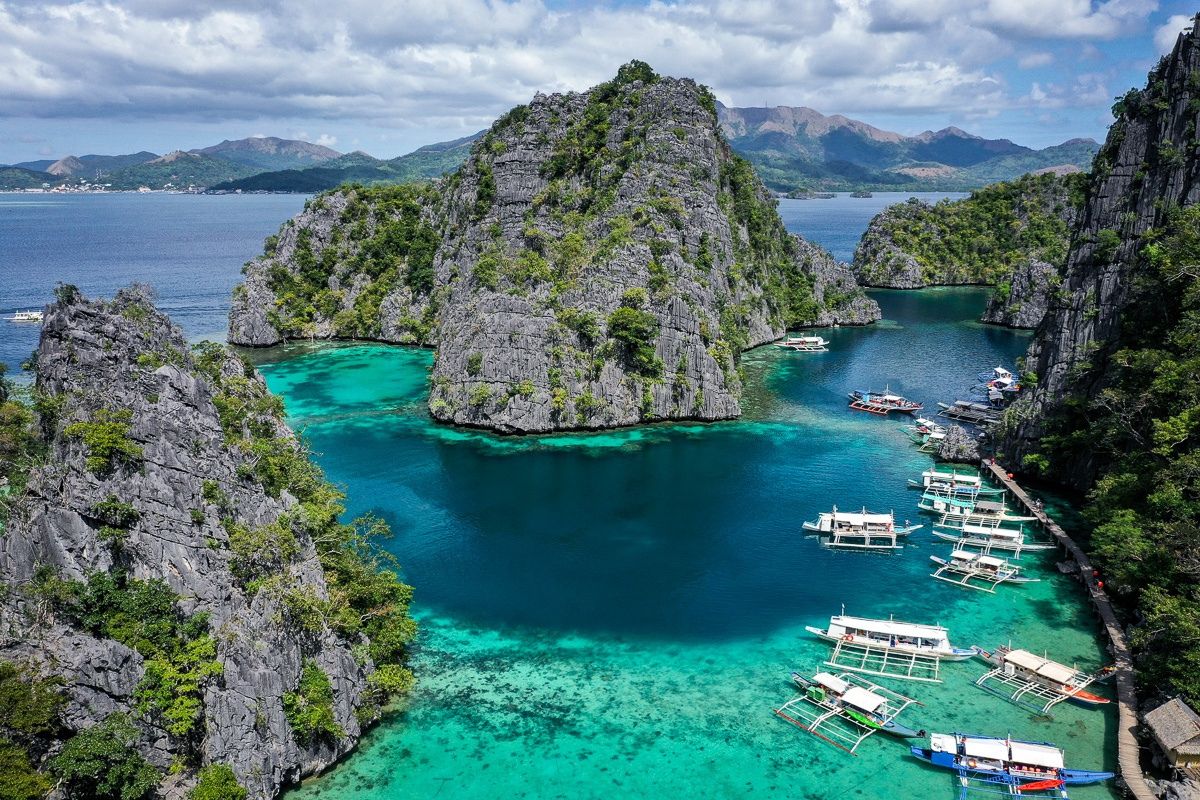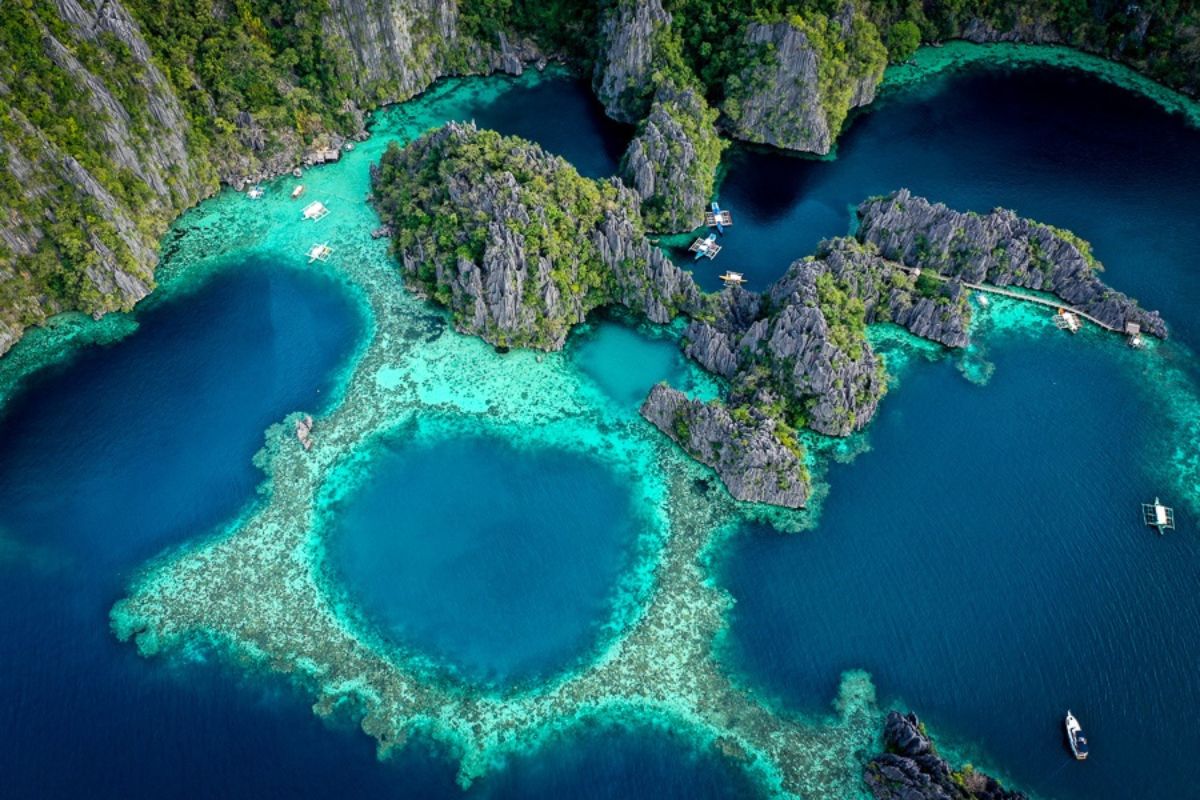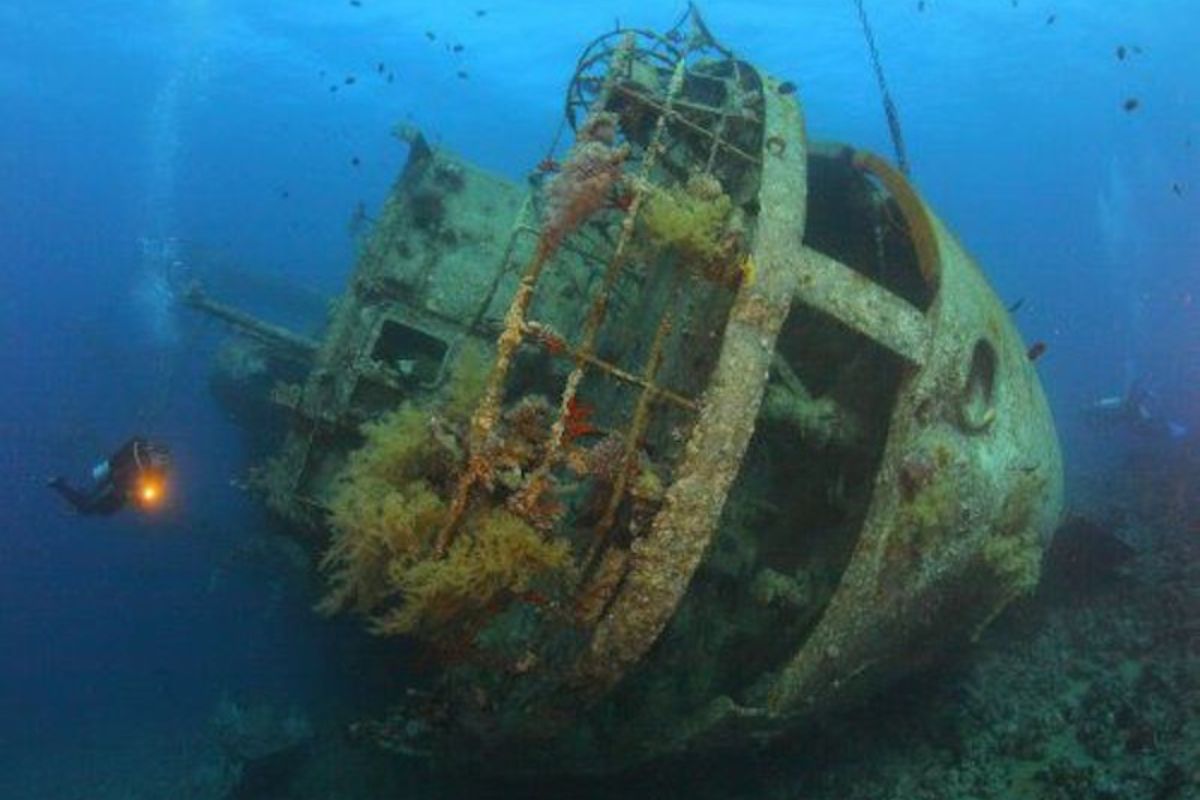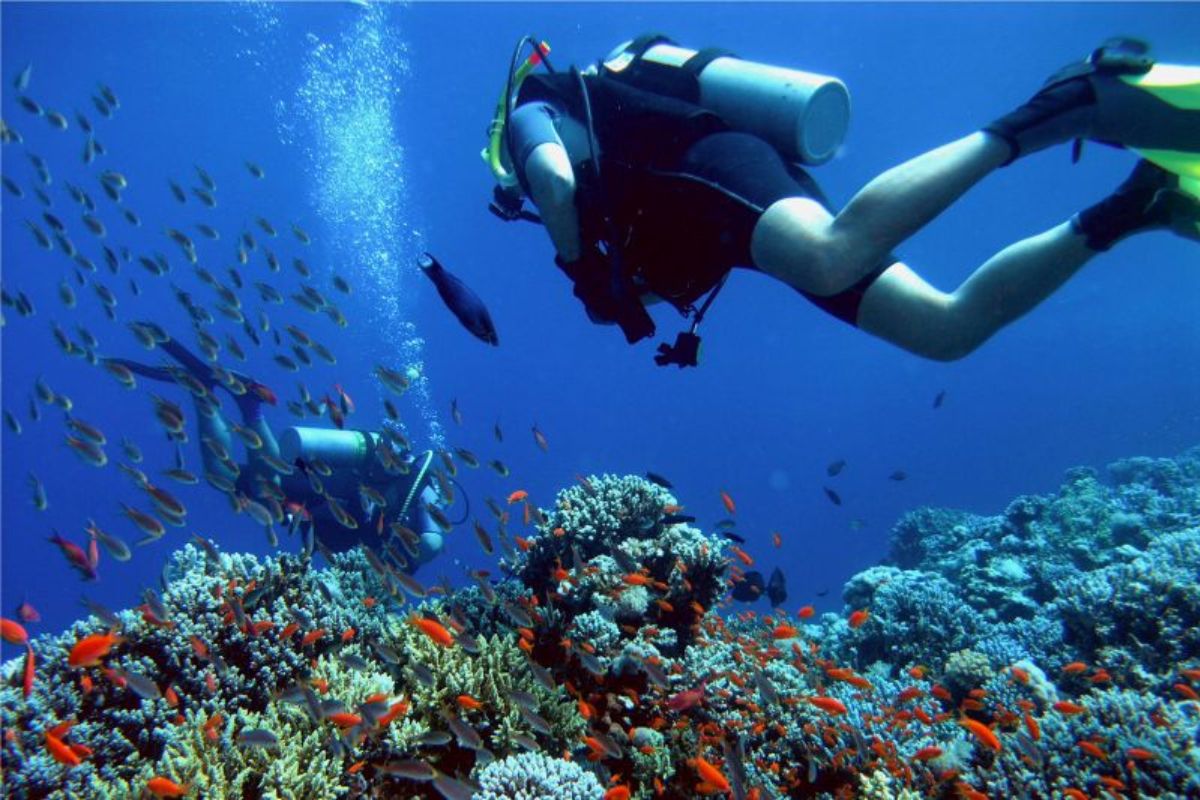Coron Island in the north of Palawan, Philippines, has been compared to an enchanted paradise that attracts a significant number of tourists from all over the world on a regular basis.

Photo: The World Travel Guy
Coron, the third-largest island in the Calamian archipelago in Palawan province, Philippines, roughly 310 kilometers from the capital Manila, is well-known for the several Japanese vessels that were sunk during WWII. Coron’s main industries are fishing and tourism, which are notably popular with divers.
The island boasts wonderful nature with caves, limestone islands, coral reefs, blue water, and nearly no waves, as well as a vast lake encircled by stunning and majestic limestone mountains.

Photo: The World Travel Guy
If tourists want to try shipwreck diving, they should have a Wreck certificate (shipwreck diving certificate) on Koh Island, in addition to the basic Open Water Diver diving certificate and the Advanced Open Water Advanced diving certificate in Thailand. With this shipwreck diving certificate, you will be able to swim into shipwreck compartments to admire and explore.
The tour guide claims that there are eleven enormous shipwrecks on the bottom of the Coron Sea. These are all Japanese warships and cargo ships that sank at the end of WWII in 1944. The ships are so large and long that the complete ship cannot be seen since the black section of the seabed is at a depth of 3-43 m. Nature has utilized them as a home for a variety of marine species, including fish, turtles, sea slugs, sea cucumbers, and various coral reefs, and they have been resting happily for approximately 80 years. The Kogyo Maru shipwreck (Japan), built in 1927, is one of the most famous shipwrecks in Coron. This is a 129 meter-long freight ship that was destroyed by American forces on 24 September 1944. It’s lying on its side at a depth ranging from 16 to 34 meters.

Photo: Girls that Scuba
The engine room housed the majority of the ship’s machinery and building materials, including mounds of cement bags, bulldozers, levers, and cement mixers, but they were hidden by coral and vegetation. Some larger components, such as gears and coal burners, retain their original shapes. Explore the black, deep space with no apparent bottom and only a few rays of light coming in through breaches in the ship’s hull, akin to scenes from science fiction films.
After diving the shipwreck, travel north of Coron to Calauit National Park to dive among dugongs. The dugong is the root of mermaid folklore because it breastfeeds its babies like humans. They usually swim in water 2-10 m deep, can be 3-4 m long, and weigh up to 450 kg, according to the Wildlife Protection Organization website. Around 30 dugongs live in Calauit National Park. Each dugong diving adventure will comprise four participants, a tour guide, and two national park rangers who will follow and supervise them. A minimum distance of 5 m must always be maintained when diving with dugongs, and each party has only 15-20 minutes to dive.

Photo: PHBus Travel Philippines
Coron diving prices are lower than in other regions, but the experience is far more worthwhile. Only Coron in Asia has such massive, beautiful, and untouched shipwrecks. Furthermore, many visitors are impressed by Coron’s cleanliness, as there is no waste on the pier, beach, or water.
The sea is calm and the weather is great for scuba diving in Coron in April and May. The Philippines is prone to storms that form in the Pacific Ocean during the rainy season; consequently, avoid coming during this time.

